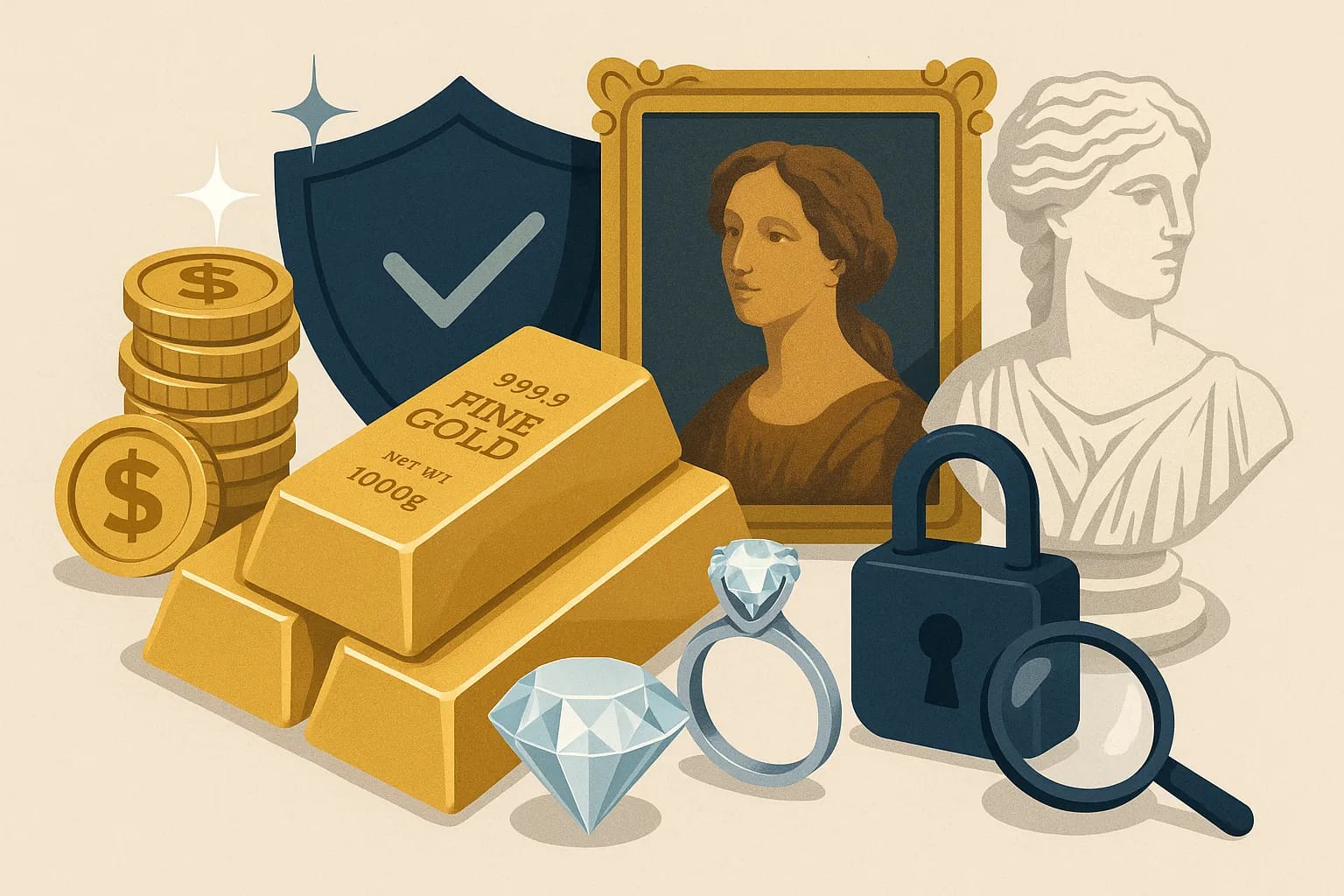Step into a bustling jewelry store, a shimmering art gallery, or a gold dealer’s office. The air is thick with anticipation, and the merchandise on display is worth more than most people’s homes. But beneath the sparkle and allure, there’s a shadowy side to this world—one that’s become a playground for criminals looking to turn dirty money clean. Let’s take a walk through the fascinating, sometimes risky, landscape of high-value item dealers and see how anti-money laundering (AML) rules are changing the game for everyone involved.

Why Precious Metals, Jewelry, and Art Are Prime Targets
Gold, diamonds, and fine art aren’t just beautiful or culturally significant—they’re also incredibly valuable, easy to move, and, in many cases, simple to buy and sell with little fuss. Criminals love these qualities. They can take a suitcase full of cash, buy a gold bar or a rare painting, and suddenly their shady money looks legitimate. Gold, in particular, is a favorite. It holds its value, can be melted down or reshaped, and is accepted almost anywhere in the world.
Diamonds and other precious stones play a similar role. They’re small, portable, and can be traded internationally with minimal paperwork. In some parts of the world, the diamond trade has even fueled armed conflicts, with illicit stones funding everything from organized crime to terrorist groups.
And then there’s art. The art market is notorious for its secrecy. Only a quarter of art sales go through banks, which means the rest often slip under the radar. Shell companies, anonymous buyers, and offshore accounts make it all too easy for criminals to hide their tracks. It’s estimated that billions of dollars in art market transactions each year are linked to suspicious activities.
How the Rules Are Changing
Governments and international bodies aren’t blind to these risks. Over the past few years, they’ve started tightening the rules. In the United States, the USA PATRIOT Act now requires dealers in precious metals, stones, and jewels to have written AML programs. These businesses must keep records, verify customer identities, and report suspicious transactions.
Europe has followed suit. The latest EU directives make it mandatory for dealers of luxury goods—including jewelers, goldsmiths, and art dealers—to carry out due diligence and report large cash transactions. If you want to pay more than €10,000 in cash, you’ll need to prove your identity and explain where the money came from.
Australia is also stepping up. Dealers who handle transactions over $10,000 must register with AUSTRAC, develop AML programs, and keep detailed records. Ongoing monitoring and customer checks are now part of everyday business.
The Tricks Criminals Use
Criminals are nothing if not creative. Here are some of their favorite tricks:
- Cash Purchases: Walking in with a bag of cash and buying gold or diamonds, then reselling them to make the money look clean.
- Structuring (Smurfing): Breaking up large purchases into smaller ones to avoid detection.
- False Invoicing: Creating fake paperwork to justify moving money across borders, even when no real transaction took place.
- Precious Metal Pool Accounts: Using accounts that hold “credits” for gold or other metals, which can be transferred or cashed out in different countries, making it hard to trace the money.
- Anonymous Art Purchases: Bidding on art through agents, then wiring money from offshore accounts, all while hiding the true buyer’s identity.
Dealers aren’t helpless, though. Many now require customers to show ID, sign forms, and explain where their money comes from. Suspicious transactions are reported to authorities. Some art dealers even check databases of stolen art to make sure they’re not helping move illicit goods.

Real-World Examples: When Things Go Wrong
Let’s say someone brings a gold necklace to a dealer, claims it’s theirs, but asks for payment to be sent to a third party. That’s a red flag. Or imagine a customer who insists on paying cash for a painting worth hundreds of thousands—another warning sign. Sometimes, entire businesses are set up just to mix legitimate sales with illegal money, making it tough for outsiders to spot the difference.
In the diamond world, the risks are even higher. Smuggling, under-invoicing, and using diamonds as a form of currency have all been linked to money laundering and even the financing of armed conflict.
Tips for Dealers and Newcomers
If you’re thinking about joining this glittering industry—or you’re just curious—here are a few practical tips to keep things above board:
- Know Your Customer: Always ask for ID and proof of address. Don’t be afraid to ask questions if something feels off.
- Watch Out for Cash: Large cash payments should ring alarm bells. If someone insists on paying in cash, dig deeper.
- Check Provenance: For art and antiques, verify where the item came from. Use databases like the Art Loss Register to check for stolen goods.
- Keep Records: Detailed paperwork isn’t just a hassle—it’s your best defense if authorities come knocking.
- Stay Informed: Regulations change fast. Make sure you’re up to date with the latest AML rules in your country.
- Report Suspicious Activity: If something doesn’t add up, don’t ignore it. Reporting suspicious transactions protects you and the industry as a whole.
Why This Matters to Everyone
You might think AML rules only matter to big dealers or international galleries. But the truth is, these regulations protect everyone. When criminals use high-value items to launder money, it fuels everything from drug trafficking to terrorism. It also drives up prices, distorts markets, and can even put honest businesses out of work.
By making it harder for dirty money to slip through the cracks, we all help create a safer, fairer world—one where the value of gold, diamonds, and art comes from their beauty and craftsmanship, not from the secrets they can hide.
The next time you admire a sparkling diamond or a masterpiece on a gallery wall, remember: there’s a lot more going on behind the scenes. And thanks to stronger AML


Leave a Reply